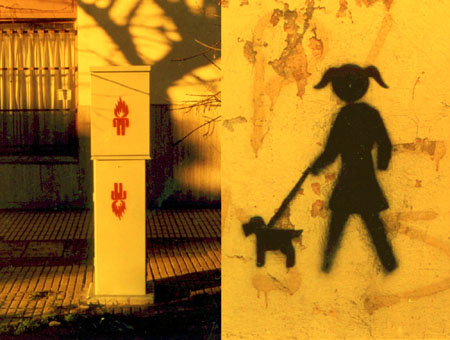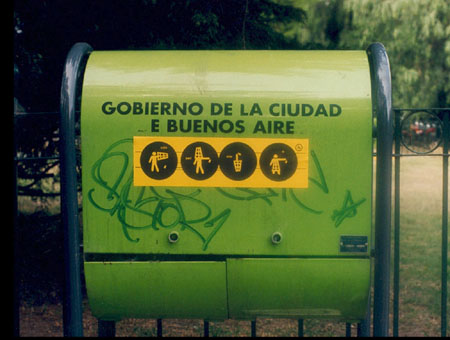DOMA COLLECTIVE
PEOPLEText: Gisella Lifchitz
After their first exhibit “Contemporary” at the Museum of Latin American Art of Buenos Aires (MALBA), these members of Doma Collective talk about their views on life, their own projects and remember how everything started. They arrive late for our interview in the big colorful bar. Only two of them come to the appointment, while the rest keeps working around the world. Barcelona, Miami, Buenos Aires, and who knows what comes next.

How did you meet?
We were studying in college together, and some of us worked in the same place. In 1998 we got together and experimented with things we liked. We started with serigraphy and street signs, and then we added video, which is now our strongest feature. Our first job was a four minute animated video clip that supposedly intervened the TV signal we were working for.
In Spanish, ‘Doma’ means ‘taming’, as in taming horses to ride them. It’s a powerful local concept, related to the gauchos and the pampas, very intertwined with historical roots.
How did you come up with that name?
There was a list of five possible names, being Doma the most powerful, according to one of the boys’ mother, who is a numerologist.
Why did you consider Doma in the first place?
Because we like the meaning of Doma (taming). To tame is hallucinating.

It has an auditory strength; it’s a nice sound.
Exactly, the word is associated to the horse, the strength, among other things.
What about the logo?
We first worked with a picture of a French toilet. We redesigned the picture by capturing the abstract shape and we ended drawing the little horse, our logo.
So your intention may be to take away the sense of things and words?
Yes, maybe, or maybe the opposite. To give things plenty of meanings till they are full of sense.

How do you define what you do?
Contemporary art. We have fun. These boys are people like us. Open idealistic artists who can’t stop working.
What are the interventions that you do?
They came up in the street, with traffic signs, trains and subways. We give things a different sense from which they already have. We changed the route and the sense of that message so it could be another, and get people confused.
The intention is that people stop being automatic, we want them to react to the things they face every day. So they can decide in a different way. People are controlled and they know which road to choose, they are not rebellious, unless they are conscious of it.
Read more ...




